Unfortunately, not a single state, including the Russian Federation, escaped such a phenomenon as disability. Many factors lead to disability, ranging from the general state of the nation’s health, the level of the healthcare system, socio-economic development, to environmental, historical, and political reasons, including war. Not all of them can be prevented, eliminated, etc. Categories of people with disabilities include a fairly large number of diseases and physical defects. But it is within the power of any society to create conditions for people with disabilities in which they could live as high quality as their problem generally allows.
The problem of disabled people in Russia
Each state pursues its own policy in relation to this problem, based on the level of its own development, including social and economic. In Russia, sadly, most of the factors affecting the scale of disability have a negative focus. As a result, disability in the state makes up almost 7 percent of the population, that is, almost 10 million people, and this is not the limit. In the world, according to statistics, every tenth person is disabled.
Work to improve the quality of life of people with disabilities
Nevertheless, considerable work is underway in the Russian Federation to improve indicators in this area. In order to determine the type of primary assistance that needs to be provided to a disabled person, a codifier has been created that defines the categories of disability. Thanks to this document, approaches to the system of activities of institutions involved in the rehabilitation of persons with disabilities are unified, in fact, it is a single language for communication between all those involved in the rehabilitation process.
The codifier is based on the provisions of the International Classification of Functioning, Disability and Health (ICF). He also takes into account national standard RF and other RF regulations. To ensure the accessibility of the physical environment for people with disabilities, a Methodological Handbook of the Ministry of Labor and Social Protection of September 18, 2012 has been developed, thanks to which the measures necessary to solve this problem have been identified.
What are “disability” and “disabled person”?
Before proceeding to the listing of categories, it is necessary to understand exactly what is meant by the basic concepts - “disability” and “disabled person”.
Disabilities are restrictions or barriers to a person who has physical, mental, sensory or mental disabilities. Accordingly, a disabled person is a person whose opportunities for life and activity in society are limited due to the above deviations. There are no age restrictions in this matter: limited opportunities may appear from birth, there are a large number (including all categories) of elderly disabled people. The status of a disabled person is assigned as a result of a number of actions, including passing a special medical commission, and has both legal and social meaning. This status implies not only capacity limitations but also receiving payments and the availability of benefits.
Medical model of the approach to the problems of persons with disabilities
The word "invalid", which literally means "unfit," is currently considered incorrect. However, many believe that the very status of a disabled person can be called a form of social inequality. The term is increasingly used. "A person with disabilities." Although the word “disabled person” is still used in the press, in normative and legislative documents as an already established and quite legitimate term.
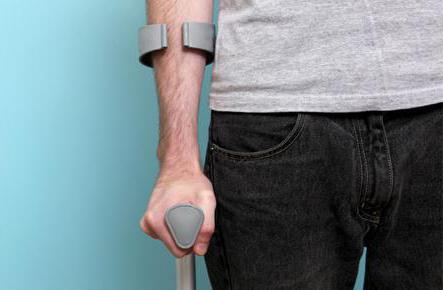 According to many experts, disability is primarily not a property of a person, but the obstacles that arise in his society. The reasons for these obstacles lie in two directions: medical and social. From a medical point of view, people with disabilities have reduced opportunities compared to an ordinary person, because of which they overcome difficulties in being in society. Accordingly, society should help people with disabilities by creating specialized institutions for them where they could live, work, study, etc. That is, in fact, isolate themselves from the rest of society. Almost all categories of people with disabilities in Russia, and in other states too, lived for a long time in accordance with this approach, which, in addition to isolation, discriminated against in society.
According to many experts, disability is primarily not a property of a person, but the obstacles that arise in his society. The reasons for these obstacles lie in two directions: medical and social. From a medical point of view, people with disabilities have reduced opportunities compared to an ordinary person, because of which they overcome difficulties in being in society. Accordingly, society should help people with disabilities by creating specialized institutions for them where they could live, work, study, etc. That is, in fact, isolate themselves from the rest of society. Almost all categories of people with disabilities in Russia, and in other states too, lived for a long time in accordance with this approach, which, in addition to isolation, discriminated against in society.
Social approach to the problems of persons with disabilities
In accordance with the social approach, difficulties for the disabled are created by society, which does not provide for the participation of such people in its activities. Therefore, people with disabilities should be integrated into society, and their living conditions adapted to the environment. From this point of view, it is necessary to create an accessible environment for people with disabilities in accordance with their needs and capabilities. For example, to equip ramps for people with disabilities, duplicate sound with various information for the blind and in sign language for the deaf, etc. In accordance with the types of assistance needed by people with disabilities and the conditions for creating an accessible environment, people with disabilities are divided into several categories and types.
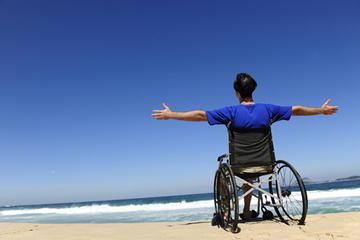
Disabled categories
Disabled people are conditionally divided by type of function restriction:
• Impairment of motor function.
• Violations of the functions of the body systems (blood circulation, respiration, digestion, metabolism, etc.).
• Sensory disturbances (vision, hearing, smell, touch).
• Mental disorders (perception, attention, memory, thinking, speech, etc.).
VTEC Disability Groups
The law also determines the degree of violation for each of the types: from the first degree to the third group. The presence, causes and degree of disability are established by the medical labor expert commission (VTEK). The first group has the most restrictions, this group is set for those who have completely lost their ability to work and require constant care. The second group is assigned to those who have less severe health restrictions, capable of self-care, but not able to work under normal conditions. The third group has the smallest restrictions; only disabled people of this category can work. However, working disabled people must be transferred to a special work regime with special conditions regulated by law, in particular SanPiN.

Serious work is currently underway to promote the employment of such people, including the category of people with disabilities (deciphering by the mentally retarded, categories of people with disabilities by type of restriction are given below), as this is part of a program to integrate them into society.
Depending on the degree of disability its category and term are determined. This is confirmed by a certificate issued on average for 1-2 years.
Category of disabled children
In addition to categories for adults with disabilities, there is a separate single group - a disabled person from childhood, which is established for children with disabilities from birth to 18 years, since almost all of them require care and supervision. After eighteen years of age, he establishes one of the three groups described above.
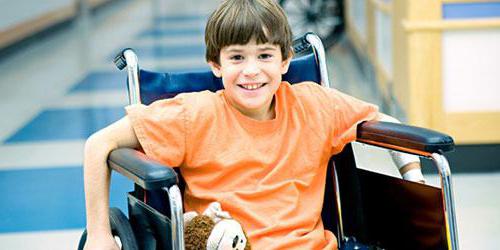
Categories of people with disabilities by type of assistance
Depending on the type of assistance that a person with a disability needs (predominant or situational), five categories of people with disabilities are identified in the codifier. Each of them is assigned a letter code:
- In means that the disabled person moves by means of a carriage.
- C - blind and visually impaired, limited in orientation.
- E - the disabled person is limited in self-care (he has no hands or hands do not work).
- K - deafblind, significantly limited in orientation.
- M - deaf or dumb.
Generally speaking, disabled people of category BK need primary assistance in the form of partial outside care, as well as support (including outside the home). Situational assistance is expressed in the help of unauthorized persons when moving outside the home. Category K may also require the help of a translator. Persons with category M require specialized help from an interpreter.
Categories by Environment Availability
The manual approved by the Ministry of Labor divides disability into forms. It also indicates the category of persons with disabilities (KOSGU). The decoding of these letters is as follows:
- G - hearing impaired.
- K - moving in wheelchairs.
- About - with violations of the musculoskeletal system (also referred to as ODA).
- C - with visual impairment.
- U - with impaired mental development.
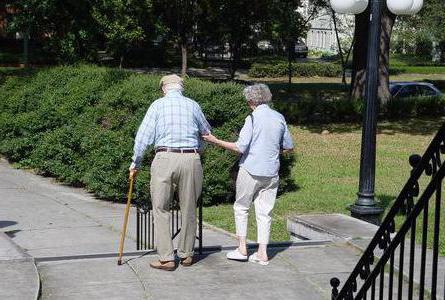
These categories are designed to determine the accessibility of an object, as a result of which an IDP passport (social infrastructure object) is created. After all, a disabled person with a certain restriction can get to without any help or not to every object on his own to get the service he needs.
These letter designations are determined in the OSI passport by the category of disabled people: KOSGU. The decoding corresponds to the first letter of the conditional name of the form of disability (wheelchairs, oporniks, mentally retarded, blind, deaf), i.e. those categories of people with disabilities who are not always able to independently exist in the environment.
Mobility Categories
Due to the accessibility of the environment, people with disabilities are also divided into mobility groups. In general, the entire population is divided into groups with normal mobility and people with limited mobility. This takes into account which categories of people with disabilities K, O, C, G, U are meant in this case. For example, hearing impaired people usually belong to the category of mobile.
People with limited mobility are those who have difficulty when they have to move independently, receive a service or information, or navigate in space. This group includes not only disabled people. Temporary health problems, pregnancy, old age also limit mobility. In the same group can be attributed to those who move with prams. In turn, not all people with disabilities belong to the mobility group.
They can be divided into categories of mobility of disabled people M1-M4:
- M1 - there are no restrictions on mobility. As already indicated, these may include people with hearing impairments.
- M2 - mobility is reduced due to the aging of the body (disabled people in old age); the same group includes people on prostheses.
- M3 - people with disabilities who use additional supports when moving (in particular, crutches).
- M4 - disabled people in wheelchairs, manually driven.
In connection with this division, when designing public, residential and industrial buildings, as well as reconstructing old ones, the legislation requires taking into account the conditions under which people with disabilities and other citizens of mobility groups can conduct life activities in the same way as other groups of the population.
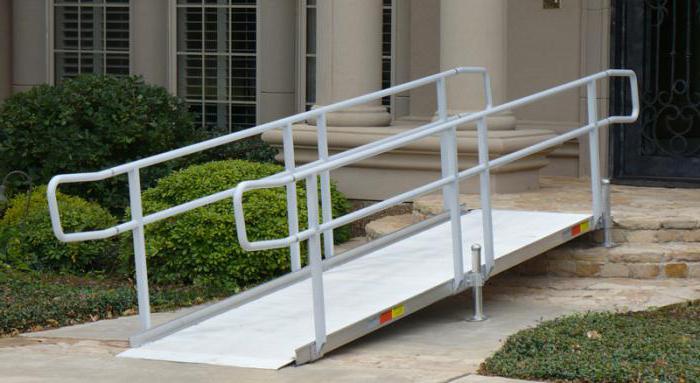
Each building and structure, as well as some other areas of public space, receive an appropriate status by which it can be determined which categories of people with disabilities M1-M4 can use this building or space, etc.
OSI Availability Certificate
One of the important factors in creating an accessible environment is that any category of people with disabilities K, O, C, D, U be provided with the opportunity to visit buildings, structures and other places. Among the conditions is the ability to freely enter and exit objects, independently move around the territory of the object to the place where they should be provided with the service, including with outside assistance (for example, employees of the object),posting information necessary for people with disabilities to have unhindered access to an object or services, and much more.
To do this, a passport of access to the AIS is issued for each specific building, in which an option is noted that corresponds to the accessibility of each category of disabled people: A, B, DU, GNI. The decoding of these designations is as follows:
- A - universal accessibility, all zones and premises of the facility are available;
- B - specialized sites and premises are equipped for the disabled;
- ДУ - conditional availability: the object is accessible with the help of the employee of the object, or services can be obtained at home or remotely;
- GNI - there is no availability due to its disorganization (or availability is temporarily absent).

Summary
Categories of people with disabilities in the Russian Federation are delimited in such a way as to take into account all the problems associated with the limitation of life. It is worth remembering that in the first place they are the same people as everyone, the difference of which is that they cannot do some seemingly ordinary things. But with the help of programs aimed at social integration and adaptation, creating an accessible environment, almost everything is available to them that is available to those whose capabilities are not limited by physical disabilities.






